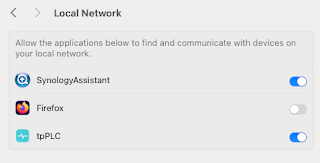This is a Work-In-Progress article, and I'm sure to make changes as I go through the next few days.
One of my clients has a requirement to run WebSphere Portal 6.1.5 as a non-root user on Linux, which is fairly standard. In most production environments, organisations are reluctant to release the root user's password to anyone, and control often remains with the hardware/OS administrators, whereas WebSphere etc. lives up at the application level.
In my scenario, I have installed WebSphere Portal Enable 6.1.5 *as* root; installing as non-root is far more tricksy, and requires one to install WebSphere Application Server as root, change the permissions of the newly installed WAS, and then install WebSphere Portal into the existing WAS environment.
This is far better explained here: -
In my case, I did the installation, as root, using the standard installation wizard, which lays down WAS, Portal/WCM etc.
Once installed, I did the following - as root: -
- Created an ibmusers group
groupadd ibmusers
- Created an ibmuser account ( as a member of the ibmusers group )
useradd -g ibmusers ibmuser
- Set the password for the ibmuser account
passwd ibmuser
- Set permissions for the /opt directory structure for the ibmusers group - on my system, this is ONLY used by WebSphere
chmod -R g+rwx /opt/IBM
chgrp -R ibmusers /opt/IBM
- Set permissions for the /tmp directory structure for the ibmusers group
chmod -R g+wr /tmp
chgrp -R ibmusers /tmp
- Set permissions for the /var/tmp directory structure for the ibmusers group
chmod -R g+wr /var/tmp
chgrp -R ibmusers /var/tmp
- Having checked, as root, that WebSphere Portal was stopped - using the serverStatus.sh command, I logged in as ibmuser and navigated to the following directories: -
/tmp
/var/tmp
/opt/IBM/WebSphere/AppServer/log
and verified that I could create/edit/delete files using the touch, vi and rm commands
- Again, as ibmuser, I then used the startServer.sh and stopServer.sh commands to start and stop WebSphere Portal
- Having run up the server, again as ibmuser, I checked that I could view and delete the logs in: -
/opt/IBM/WebSphere/AppServer/profiles/wp_profile/logs
- I rebooted the server, and logged on from the Gnome login panel as ibmuser and ran through the same tests as before, just to ensure that there were no root permissions hanging around :-)
Given that I'd made a change to the permissions of /tmp, I though that there might be lock files etc. hanging around. I changed the runlevel to 3 to fully kill the X11 server, via the init 3 command, cleared the contents of /tmp using the command rm -Rf /tmp/* and then restarted X11 using the command init 5.
When I logged into Gnome as root, all was well.
So far, so good. The next test is to add a new user to the ibmusers group and see whether I can run through the same set of tests again.


2 comments:
Did you made good expiriences with this?
What about patching? Does it still work?
Yes, it worked perfectly well, including fix packs etc.
Post a Comment